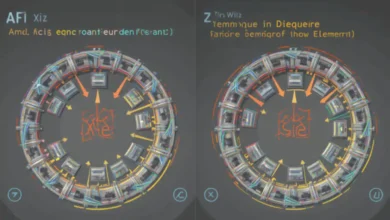Synchronization in Operating Systems: A Comprehensive Guide Meta Description:

Introduction
In the realm of computing, synchronization in operating systems (OS) is a pivotal concept that ensures the smooth and efficient execution of processes. By coordinating the actions of multiple processes, synchronization avoids conflicts and maximizes resource utilization. This guide delves into the various aspects of synchronization, providing insights into its importance, types, mechanisms, and common challenges.
What is Synchronization in Operating Systems?
Synchronization in operating systems is a mechanism to control the execution sequence of processes and threads, ensuring that critical operations are carried out without interference. It is essential for maintaining data consistency and system stability, particularly in a multitasking environment.
The Role of Synchronization in Multitasking
Multitasking environments, where multiple processes are executed simultaneously, heavily rely on synchronization. It prevents resource conflicts and ensures that processes do not block each other indefinitely, facilitating a harmonious operational flow within the OS.
Types of Synchronization Mechanisms
Operating systems employ various synchronization mechanisms, including semaphores, mutexes, and monitors. Each type serves a specific purpose, from managing access to resources to controlling the order of process execution.
Semaphores
Semaphores are synchronization tools that manage concurrent access by multiple processes. They use two atomic operations, wait and signal, to handle resource allocation, ensuring that no two conflicting processes are executed simultaneously.
Mutexes and Their Application
Mutexes (mutual exclusions) are another critical synchronization tool, primarily used for locking resources. When a process accesses a shared resource, it locks the mutex, performs the required task, and releases the lock, thereby preventing data inconsistency.
Monitors: A Higher-Level Synchronization Tool
Monitors provide a higher level of abstraction for synchronization, encapsulating shared variables and the procedures that operate on them within a single module. This encapsulation helps in simplifying the synchronization logic and enhancing system reliability.
Deadlocks and Synchronization
A major challenge in synchronization is deadlock, where two or more processes hold resources and wait for the other to release them. Understanding and preventing deadlocks is crucial for developing robust and efficient operating systems.
Strategies for Avoiding Deadlocks
Several strategies can help avoid deadlocks, such as resource ordering, deadlock prevention algorithms, and deadlock detection and recovery techniques. Each strategy has its merits and can be chosen based on the specific requirements of the system.
Performance Considerations
While synchronization is vital for system stability, it can also impact performance. Overhead from synchronization mechanisms can lead to slower system response times. Balancing synchronization and system performance is a key challenge for OS developers.
The Future of Synchronization in OS
As computing systems evolve, the approaches to synchronization in operating systems also advance. New algorithms and methods are continually developed to handle more complex, distributed, and concurrent systems efficiently.
Conclusion
Synchronization in operating systems is a cornerstone of modern computing, crucial for ensuring that processes operate smoothly and efficiently without interfering with each other. As technology evolves, so too will synchronization techniques, continuously improving the stability and efficiency of multitasking environments.
FAQs
Q1: Why is synchronization necessary in operating systems?
A1: Synchronization is necessary to manage the execution of concurrent processes, prevent data inconsistencies, and ensure that resources are used efficiently.
Q2: What is a mutex and how does it differ from a semaphore?
A2: A mutex is a synchronization tool that provides mutual exclusion, ensuring that only one thread accesses a resource at a time. A semaphore controls access to multiple instances of resources, allowing more than one thread to enter the critical section, controlled by a counter.
Q3: How do monitors differ from mutexes in synchronization?
A3: Monitors provide a higher level of abstraction by encapsulating both the procedures that work on the data and the data itself, whereas mutexes are merely locks that threads must acquire before accessing shared resources.
Q4: What are some common strategies to avoid deadlocks?
A4: Common strategies include avoiding circular wait conditions, using resource allocation graphs, implementing deadlock prevention protocols, and using preemptive scheduling.
Q5: Can synchronization affect the performance of an operating system?
A5: Yes, synchronization mechanisms can introduce overhead that might decrease system performance by causing delays and reducing concurrency, especially if not implemented efficiently.




